2013 | Berlinale Shorts
Cinematic Correspondences
Maike Mia Höhne describes the 2013 Berlinale Shorts programme as star-shaped: the films complement and interact with one another and exhibit an interplay which goes beyond the immediately apparent thematic dimension. In our interview, the curator gives an overview of the big picture.
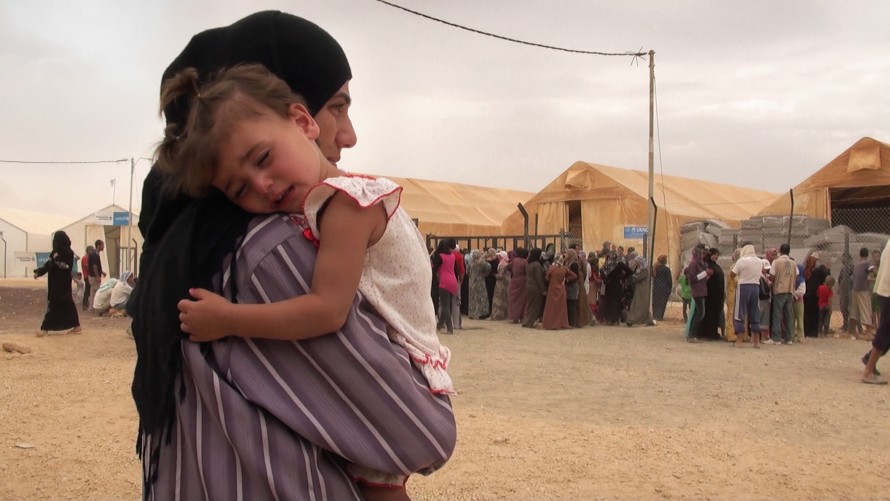
Al Intithar (The Waiting) by Mario Rizzi
Last year you put narration and the question of how storytelling still functions today on the back burner. Your leitmotif was “Say goodbye to the story“. Are you able to name an overarching theme for this year?
Cylixe, the director of Una Ciudad En Una Ciudad (A City Within a City) said the motif of her film was heterotopia, a place for the other, which at the same time was also a mirror of social relations, in which the small stood for the greater by either reflecting or criticising it. I find that hits the spot very well. The question of structure and organisation in today's society, rather than the singular or the path of the individual, is very central to this programme.
Una Ciudad En Una Ciudad is a reflection about shared life in the highest squat-house in the world. In a 20 storey building in Caracas - originally conceived as a financial tower - residents are living and organising themselves. How does ownership function if the property belongs to nobody? The film finds a very innovative way of tackling these issues, without relying on the usual talking heads of classical documentary formats.
Mario Rizzi spent seven weeks in a Jordanian camp housing more than 10,000 Syrian refugees. In 30 unbelievable minutes, his film Al Intithar (The Waiting) portrays the daily lives of the refugees and the waiting. Mario Rizzi, who was already represented in the Berlinale Shorts programme in 2008 with his portrait film impermanent has been engaged with the Middle East for years. He is very knowledgeable and took a lot of time to make his film. You sense this in the discussions he has with the women in the camp for Al Intithar. He gets very close to them, he accompanies them to prayer, even during a Caesarean section.
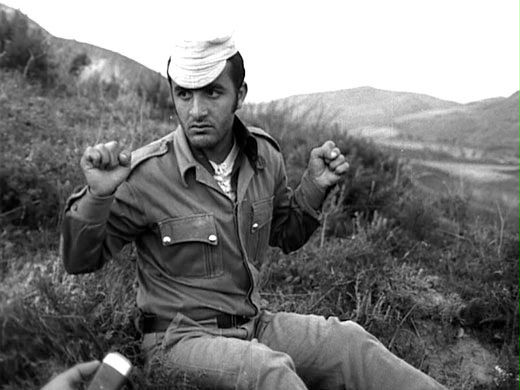
Khutwa Khutwa (Step by Step) by Ossama Mohammed
The big parentheses comes in the form of Khutwa Khutwa (Step by Step) by Ossama Mohammed from Syria. The Lebanese artist Akram Zaatari (Tomorrow Everything Will Be Alright, Berlinale Shorts 2011) slipped me this degree film for the Moscow State Film Academy in 1978. He explores what happens when poverty prevents people from accessing opportunities. Religion and the military seem to be the only remaining systems that provide any structure. But it's not about the inevitability of events. More than anything, the film is thought-provoking and raises further questions that can be applied to many other countries: how do we want to treat one another? What forms of government are possible? What is freedom? What is religion?
Intimate Views
In SANCTITY (D. Ahd), the focus is on a woman who is torn from her daily life by the death of her husband. She is pushed to her limits, she feels forced or encouraged to break societal taboos and rules to fight for her place in society...
The opening sentence of the film basically says it all. The brother of the deceased man knocks on her door and demands the money that her husband still owed him. When she answers that she knows nothing about it, he responds “Why should he tell you about it? You're a woman.“ SANCTITY is very simple in terms of its structure and yet it communicates so much through its calmness. In many films, one senses the love and commitment with which the filmmakers have worked on their projects. This is especially true for the documentaries this year, most of which are absolutely stringent in formal terms.
A good example is the Turkish-German documentary Aşura by Ergun Köken which manages to document the ceremonial procedures of the most important Shiite day of mourning. He manages to access the most sacred situations and even films men crying on command.
Ja kada sam bila klinac, bila sam klinka (When I Was a Boy, I Was a Girl) is an impressive documentary from Serbia. Finally, no clichés about sex workers! Ivana Todorovic portrays her transsexual friend who gives her very special, unpretentious access. A very intimate view, that gets very close. These are the films that we need in order to get closer to people who are so far from us.
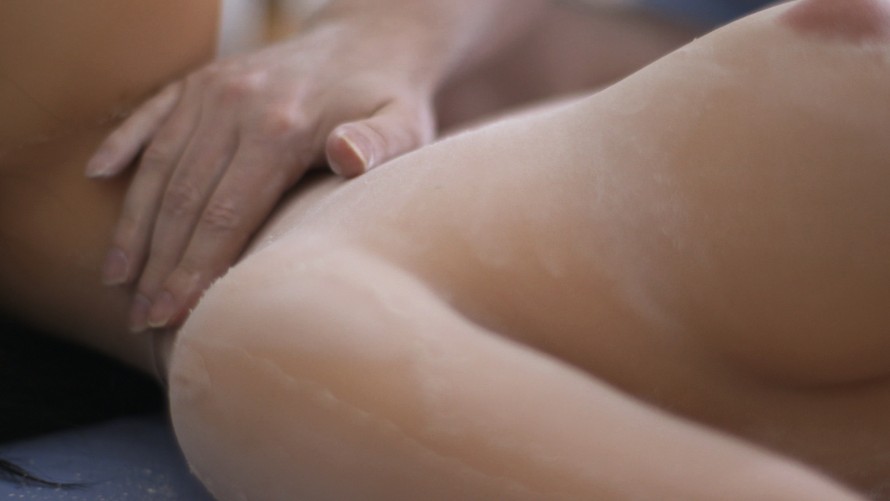
Traumfrau (Dream Girl) by Oliver Schwarz
Exposed Characters
In the Korean entry Love Games a love story is told through very reduced means. Wherein lies the strength of this reductiveness?
Joung Yumi manages in her animations to go deep into the details with very fine sketches, because she never reduces situations to clichés. The same goes for this film, in which a couple attempts together to eat a cookie hanging from a string. Combined with two further images, everyone understands that the couple is in love. Yet Joung Yumi doesn't stop at this point, but examines the situation very closely, exposes the characters. It's seldom that I see this in animations.
Talking about the film Geliebt (Be Loved, Berlinale Shorts 2010) you said that it impressed you with the calmness, concentration and clear visual compositions with which it addressed a potentially sensationalistic topic, the (also sexual) relationships of people to dogs. Traumfrau by Oliver Schwartz is about a man who has a romantic relationship with a rubber doll. The protagonist's face remains hidden. Doesn't that encourage a voyeuristic gaze?
I understand it to be exactly the opposite, a protective measure. With unbelievable timing, the film answers every question that one would ask, exactly in the moment that it arises. The protagonist himself is very clear about what he is doing. He is very reflective. Actually he wants to return to the lap of the family. In Geliebt, Jan Soldat shows his protagonists very frank from the beginning, notabene there are two characters. In the case of Traumfrau, we don't even know if it's his real flat. Situations are set up in stereotypical locations like the bed, dining table, sofa. Due to the fact that Oliver Schwarz protects his subject, he gives the viewer the opportunity to get closer to his character.
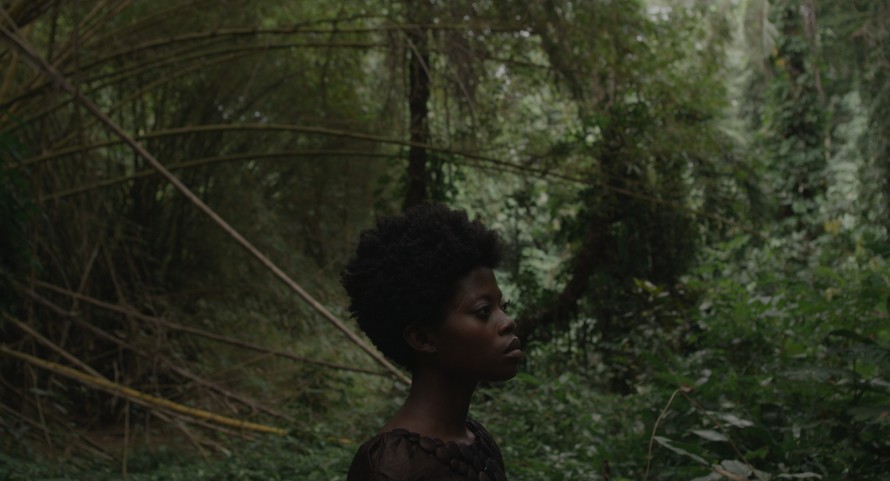
Jojo Abot in Kwaku Ananse by Akosua Adoma Owusu
Ta av mig (Undress me) by Victor Lindgren is an equivalent to Traumfrau in staged form. All questions that you might have on the topic of gender transformation are dealt with out in the open.
Kwaku Ananse by Akosua Adoma Owusu also corresponds to Traumfrau, although in a very different way. A young woman travels to Ghana for the funeral of her father. There, she meets his family and his second wife. She overcomes her shyness, leaves her small sphere behind and takes the next step. The step that the man in Traumfrau never manages to take.
Associative Bridges
For me, the programme this year is a star with many peaks, correlations and interactions between films. One can contemplate the films in all sorts of ways. In the end there will always be the opportunity of dialogue between the various works.
One peak of the star is surely A coup de couteau denté (Stab) by Clément Decaudin, a great study on modern music. The musicians leave the big stage, confront the audience directly and in doing so enter a totally new state. Besides, the film beautifully observes the wordless communication that occurs between the musicians.
The second “loud” film in the programme is Between Regularity and Irregularity by Masahiro Tsutani. This is a film you really need to watch on the big screen and listen to through a cinema sound system. But the dramaturgy is also very good. This year we're showing two more Japanese films: UZUSHIO -Seto Current- by Naoto Kawamoto, a continuation and expansion of his work from the previous year and The Silent Passenger by Hirofumi Nakamoto, which removes hermit crabs from their natural habitat and places them in a hotel room. There they crawl under a blanket and explore every nook and cranny. Meanwhile, the artist Rachel Mayeri shot a film specially for chimpanzees in a zoo and shows the caged animals the result in Primate Cinema: Apes as Family. Here too, the question of creating space is central.
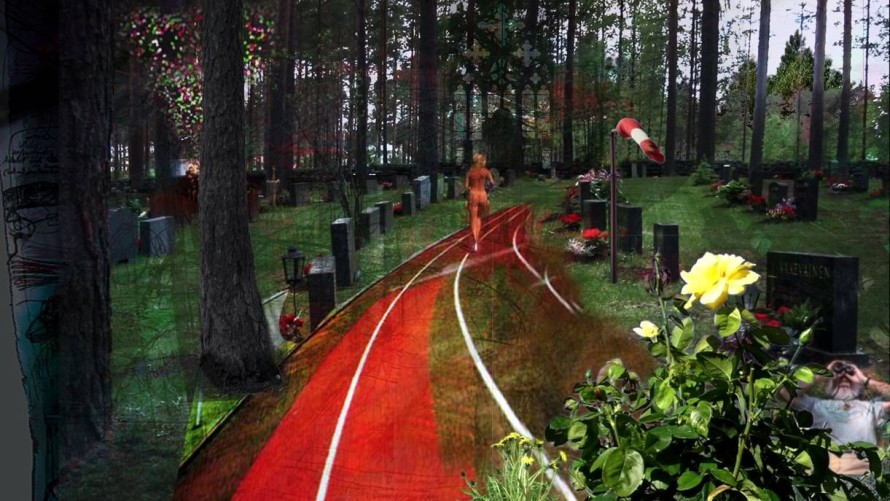
FORST by Ulu Braun
With all the aforementioned references and interconnections, how are you able to programme separate blocks of films for the audience?
The core will be made up of feature films such as SANCTITY and Kwaku Ananse, but also La Fugue (The Runaway) by Jean-Bernard Marlin, which works with its visual language and its characters very consciously.
Around these strong feature films, I will construct the programme in the shape of an imaginary star, so that one gets a feeling for the whole. This year we'll be publishing a blog on the programme for the first time. Members of the selection commission will be writing about individual films or posting related images. I'll also invite people to participate and try to help define the films and draw connections between them. The film journalist Anke Leweke, for example, will be writing about Khutwa Khutwa, while gallerist Olaf Stüber will comment on FORST by Ulu Braun, in order to place the film in another context. Ulu Braun comes from the graffiti scene and therefore automatically has a great deal of understanding for the overwriting of information and the creation of new realities. With FORST, he expands video collage by introducing a third dimension.